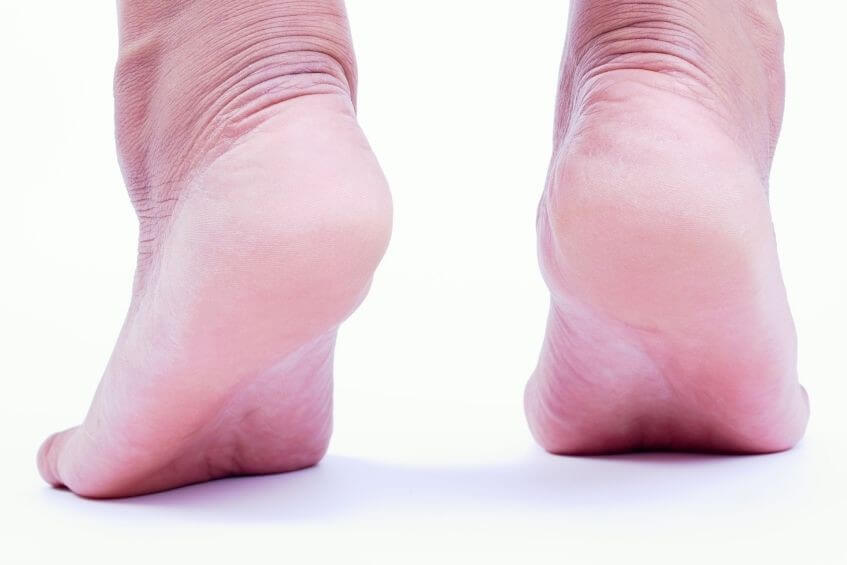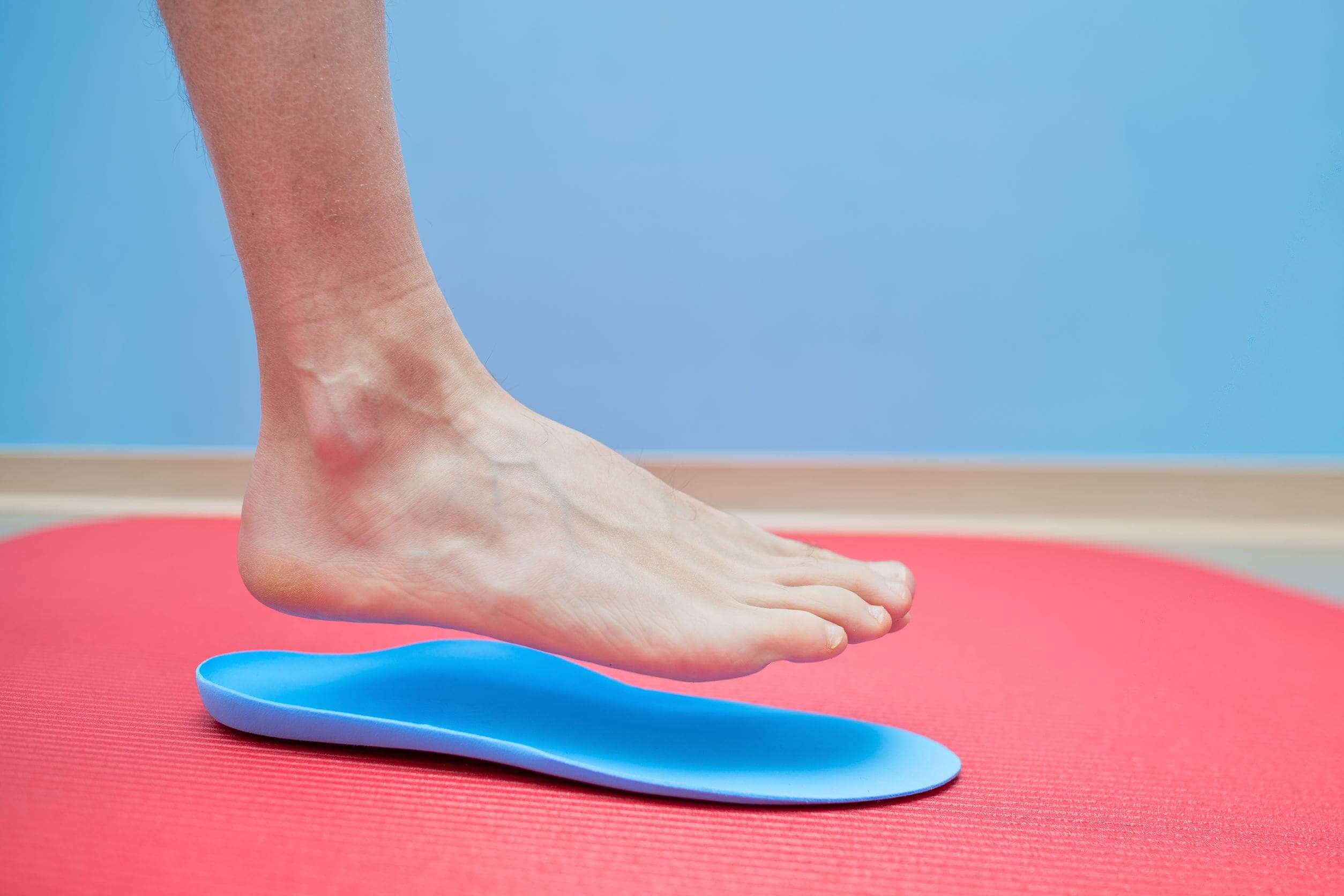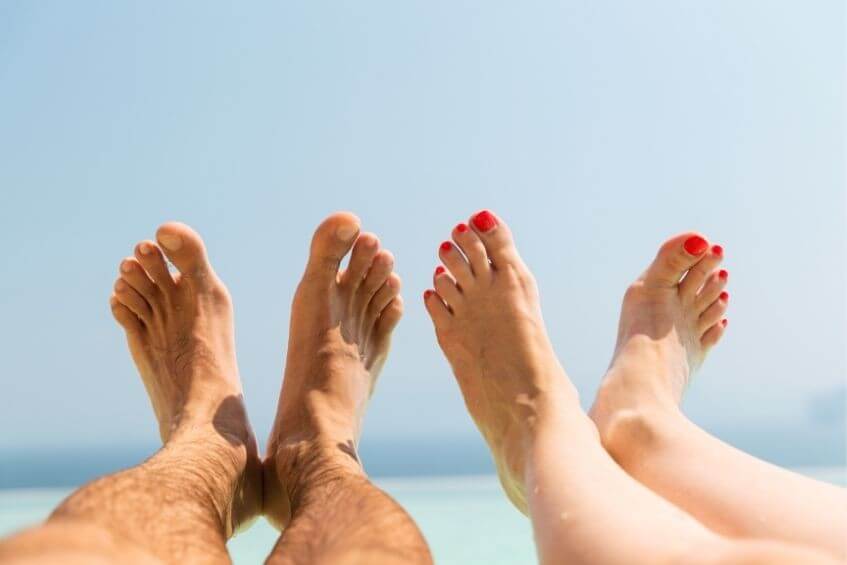
Jump to section
Our podiatrists work alongside patients with Charcot-Marie-Tooth (CMT) to help manage the foot and leg problems that often arise so they can continue to live and work as normally, safely and independently as possible. As the symptoms of CMT can change over time, it’s important to develop a good relationship with a podiatrist you trust to help you navigate through any challenges and keep your quality of life a priority.
To help you best understand CMT, you need to know that when you touch something, it is the sensory nerves in your fingertips that send messages to your brain that allow you to interpret what you’re touching and create that ‘feeling’ (sensation). These are the peripheral nerves that run from the brain, down the spinal cord and to your hands and feet.
Charcot-Marie-Tooth (CMT) describes a group of disorders that damage these peripheral nerves, affecting your ability to feel and detect sensations. As your nerves are also responsible for relaying messages between the muscles and the brain and helping turn thoughts into actions, CMT also affects muscle strength by damaging the motor nerves that control the muscles.
With CMT, you experience changes in both your sensation and muscle function.
Sensory changes can include being unable to detect when your feet touch an object, or being unable to perceive the extent of how hot, cold, sharp or blunt an object is. You may also become unable to feel vibrations or lose the ability to accurately perceive where your body is in space - for example, closing your eyes, and being able to move your fingers to your mouth purely by ‘feeling’ where they are in space.
Motor nerve changes can lead to muscle weakness and a decrease in muscle bulk in the feet, legs, hands or arms. Weakness in the muscles of the feet and legs can cause foot drop, where the toes don’t clear the ground as you walk, as the strength is missing to keep them up. This can result in a walking style that requires excessive hip and knee bending to help the foot clear the ground. This can lead to balance and stability issues, with risks of tripping and falling. Other symptoms can include:
The severity of your symptoms will vary significantly between people and even between family members with the disease. Once your CMT is diagnosed, however, your team of healthcare providers will monitor you closely and manage the new symptoms that gradually arise.
CMT is hereditary, caused by mutations in at least one of over 100 genes involved in producing either parts of the nerves or the nerve sheath,
which surrounds them like an insulating cover and helps support their effective function. When parts of the nerve are affected, the nerves
can’t function properly, and their signals may become blocked, leading to the symptoms of CMT.
The genes involved determine which type and subtype of CMT disease a person has, with five specific subtypes being shown in studies to account for almost 90% of all genetically confirmed mutations. The type of CMT you have will influence the differences in the age at which symptoms start, inheritance patterns, and which part of the nerve is involved. You’ll be informed which type you have and more information on what it means and the specific characteristics when you get your diagnosis.
While many people are aware of their family history of CMT and have regular monitoring with their GP, other times our podiatrists may see
someone looking for help with their foot drop, hammertoes,
or walking difficulties related to contracted and weak muscles, and may prompt them to have a thorough assessment with their GP to rule out
CMT.
Diagnosing CMT involves completing a neurological exam and examining a person’s medical and family histories. If CMT is suspected, you’ll receive a referral to a neurologist (a doctor who specialises in conditions affecting the nervous system) and further studies of the nerves as well as genetic testing will likely be done.
As CMT has no cure, treatment focuses on managing the symptoms to improve a person’s quality of life, optimising comfort and mobility,
and helping maintain independence and confidence. This involves a multidisciplinary approach, seeking the input of a range of health
professionals, which alongside podiatrists can also include physiotherapists, occupational therapists, genetic counsellors or social
workers, neurologists, orthopaedic surgeons, mental health providers and more.
The two primary types of pain in CMT are nerve pain and muscle or joint pain. Nerve pain can be challenging to manage
because it can be spontaneous and unpredictable. This pain is best managed using medicines prescribed by your neurologist, though newer
technologies like TENS units are showing promise in helping with neuropathic pain for certain conditions.
Muscle and joint pain should be treated on a case-by-case basis, assessing what can be done to ease the load on the joint
or muscle and, depending on the severity of symptoms, either support its function or optimise comfort by best accommodating the foot. This
is where your podiatrist can help.
We work extensively to help support your independence and quality of life by helping support the muscles, joints and bones of the feet and legs that manifest the symptoms of CMT. Our goals are to:
We achieve this using a range of custom services including:
To learn more about CMT and what you can expect, the experiences of others with CMT, or seek further local support, please visit CMT
Australia

Our feet are the foundation for the entire body, so it's important that they have enough strength to tolerate our activity levels. Use
these three exercises to help strengthen your feet.

Not everyone needs orthotics, but they can play an integral role in treating or relieving pain in several foot and lower limb conditions.

The heat and humidity of an Australian summer makes it a prime time for issues to arise, so our newest podiatrist Lucy has put together
seven helpful tips to keep your feet healthy and problem free throughout summer.
| Monday | 7:40am - 6:00pm |
| Tuesday | 7:40am - 6:00pm |
| Wednesday | 7:40am - 6:00pm |
| Thursday |
7:40am - 6:00pm |
| Friday | TEMP CLOSED |
| Saturday | CLOSED |
| Sunday | CLOSED |
Ground Floor, 344 Queen Street,
Brisbane City QLD 4000
| Monday | 7:40am - 6:00pm |
| Tuesday | 7:40am - 6:00pm |
| Wednesday | 7:40am - 6:00pm |
| Thursday |
7:40am - 6:30pm |
| Friday | 7:40am - 5:00pm |
| Saturday | 7:40am - 4:30pm |
| Sunday | CLOSED |
Newmarket Village, 114/400 Newmarket Rd, Newmarket QLD 4051